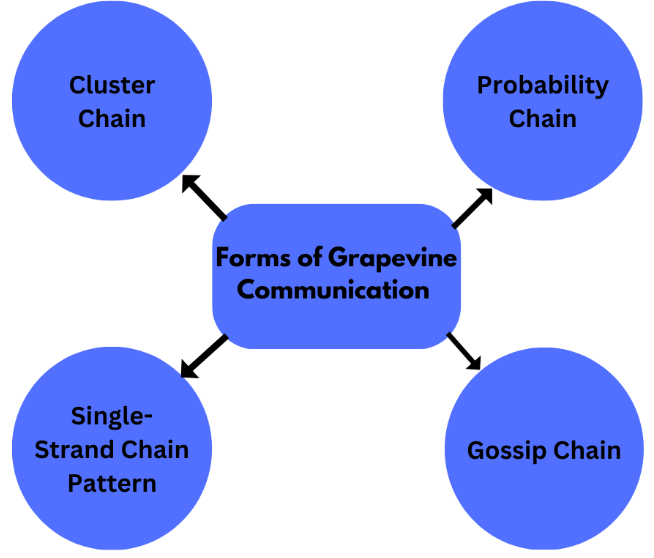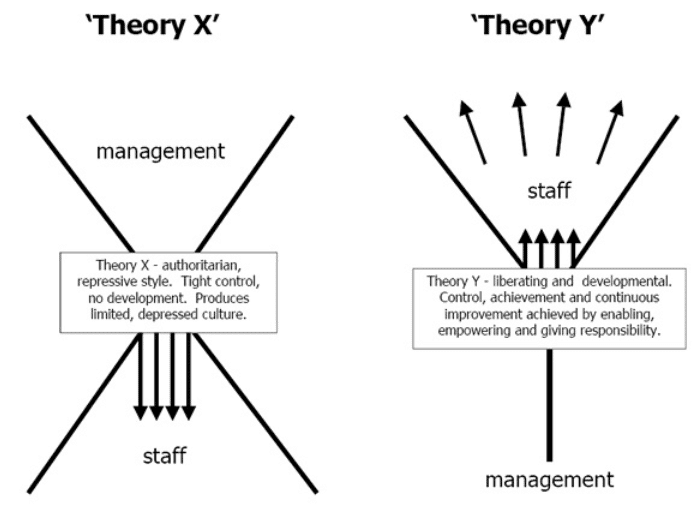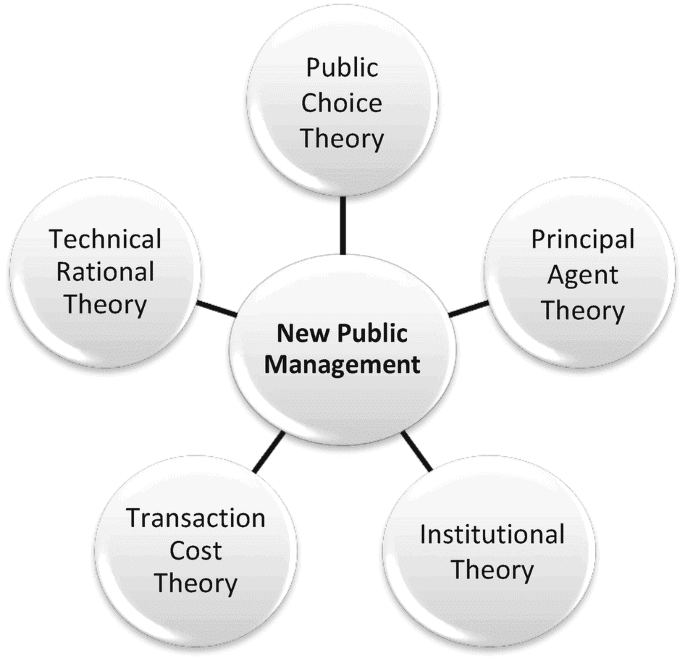UPSC Mains Answer PYQ 2024: Public Administration Paper 1 (Section- A) | Public Administration Optional for UPSC (Notes) PDF Download
Section A
Q1: Answer the following questions in about 150 words each: (10 × 5 = 50 Marks)(a) "Politics-administration dichotomy debate is still alive." Comment.
Ans: The politics-administration dichotomy is a concept introduced by Woodrow Wilson in 1887, which argues that politics and administration should be separate functions in government. Politics refers to policy-making, while administration refers to the implementation of policies. Over time, scholars have debated whether this separation is possible or desirable.
In contemporary public administration, the dichotomy is still debated. Proponents argue that a clear division allows civil servants to execute policies efficiently without political interference. However, critics suggest that complete separation is unrealistic, as public administration inevitably involves political considerations. Political decisions influence administrative actions, especially in a democratic system where elected representatives shape policy.
Recent examples like the role of bureaucrats in framing and implementing social welfare schemes in India or the influence of political ideologies on administrative decisions highlight the interdependence of politics and administration. The dichotomy remains a theoretical ideal, but in practice, it is difficult to achieve.
(b) "Formal organisations are made up of informal groups." Discuss.
Ans: Formal organizations are structured entities that follow a set of rules and hierarchies, aimed at achieving specific objectives. However, informal groups often emerge within these organizations, consisting of individuals who form relationships outside the formal structures.
Informal groups can emerge for various reasons, such as shared interests, friendship, or mutual support among colleagues. They can influence organizational dynamics, either positively or negatively. For instance, informal groups may facilitate communication, foster teamwork, and provide emotional support, helping employees navigate bureaucratic constraints. However, they can also hinder the formal authority if they resist policies or create rivalries.
An example of this is in government offices, where informal groups often play a significant role in shaping the decision-making process, despite the official chain of command. The synergy between formal and informal groups is crucial for the overall effectiveness of an organization, as long as it aligns with organizational goals.
(c) "Grapevine is a necessary evil." Examine.
Ans: The term "grapevine" refers to informal communication networks within an organization, through which information spreads rapidly, often unverified or exaggerated. It can be seen as a "necessary evil" because it has both positive and negative aspects.
On the positive side, the grapevine helps in the quick dissemination of information, especially in large organizations where formal communication channels may be slow. It can help employees stay informed about important decisions or changes, even before official announcements are made. This informal communication helps in building a sense of unity and solidarity among employees.
However, the grapevine also has downsides, including the spread of rumors and misinformation, which can create confusion, mistrust, and morale issues. It often bypasses official communication channels, leading to distorted information.
Thus, while the grapevine can be a source of rapid information flow, organizations must manage it carefully, ensuring that it does not undermine the formal communication system or organizational integrity.
(d) Healthy Headquarters and Field Agencies relationship thrives on effective communication. Comment.
Ans: A healthy relationship between headquarters and field agencies is crucial for efficient administration and implementation of policies. Communication plays a key role in ensuring this relationship is effective and productive.
Headquarters are responsible for formulating policies, providing guidelines, and overseeing the functioning of field agencies. On the other hand, field agencies are tasked with implementing policies at the grassroots level. For this coordination to work smoothly, clear, open, and timely communication between the two is essential. Effective communication ensures that the field agencies understand the objectives of the policies, provide feedback about ground realities, and share challenges or successes with headquarters.
For instance, during the implementation of the National Rural Employment Guarantee Scheme (NREGS), clear communication between the Ministry of Rural Development (headquarters) and local authorities (field agencies) has been vital in addressing concerns like fund allocation and ensuring transparency.
In conclusion, a strong communication framework fosters trust, minimizes errors, and facilitates smooth policy execution. Without effective communication, there can be misunderstandings, delayed implementation, and inefficiency.
(e) Media has become more of a societal lens than institutional lens. Analyse.
Ans: Over time, the role of media has evolved from being primarily an institutional lens—representing the views of government and institutions—to becoming more of a societal lens that reflects public opinion, concerns, and interests.
Historically, media was seen as an agent of state, often serving as a mouthpiece for government policies and actions. However, with the rise of digital media, social media platforms, and citizen journalism, there has been a shift. The media now represents a broader range of voices, including the marginalized, social movements, and opposition viewpoints, thus becoming a tool for public discourse rather than merely serving institutional agendas.
The advent of social media platforms like Twitter and Facebook has further amplified this transformation, where ordinary citizens can express their views, critique policies, and even influence decision-making processes. For example, the #MeToo movement, propelled by social media, showcased how the media can focus on societal issues, often challenging institutional structures.
In conclusion, while institutional media still exists, the increasing influence of public-driven media has made it a societal lens that often challenges traditional power structures, highlighting the shifting dynamic between media and society.
Q2:
(a) McGregor's 'Theory X' and 'Theory Y' provide insights into human motivation at workplace differently. Examine in detail. (20 Marks)
Ans: McGregor's Theory X and Theory Y are two contrasting theories that explore human motivation at the workplace, influencing management styles and organizational practices.
Theory X assumes that employees are inherently lazy, lack ambition, and avoid responsibility. According to this theory, managers need to exercise strict control over workers, employ close supervision, and rely on punishment or rewards to motivate employees. This theory aligns with an authoritarian or micromanagement style of leadership, where managers exert significant control over the workforce.
Theory Y, on the other hand, assumes that employees are self-motivated, enjoy taking responsibility, and are capable of self-direction and creativity. Managers who embrace Theory Y believe in delegating authority, encouraging employee participation in decision-making, and fostering an environment of trust and autonomy. This theory reflects a more democratic and participative leadership style.
Real-world examples include Google, which fosters creativity and autonomy through flexible work environments (Theory Y), and assembly line production environments, where strict oversight and standardized tasks might reflect Theory X assumptions.
In conclusion, McGregor’s theories underscore the critical role that management's perception of human nature plays in shaping organizational practices. Embracing Theory Y often leads to more empowered employees and innovation, whereas Theory X may result in a more controlled and less engaged workforce.
(b) Good governance adds normative and evaluative attributes to the process of governing. Comment. (15 Marks)
Ans: Good governance is often defined by principles such as transparency, accountability, responsiveness, and rule of law. It provides a framework for government action and decision-making that not only ensures efficiency but also upholds ethical standards and societal expectations.
The normative aspect of good governance involves setting standards of what is "right" or "good" in the governing process. This includes adhering to principles of fairness, justice, and inclusivity in decision-making. A normative approach insists on moral responsibility and respect for human rights. For instance, the Right to Information Act in India ensures transparency and accountability, reflecting the normative aspect of governance.
The evaluative aspect of good governance involves measuring the effectiveness of government actions and ensuring that policies achieve intended outcomes. It assesses whether the processes are inclusive, equitable, and participatory. Evaluative tools like Citizen Charters and the Public Services Delivery Act are designed to monitor the quality of services and make sure they are responsive to the needs of citizens.
In conclusion, good governance emphasizes the balance between ethical standards (normative) and effective execution (evaluative), making it crucial for sustainable development and social harmony.
(c) Regulatory Authorities are independent and effective for controlling service delivery activities, but are subjected to extraneous factors. Do you agree? Give reasons. (15 Marks)
Ans: Regulatory authorities are designed to act independently, ensuring fair competition, consumer protection, and effective service delivery in sectors like telecom, energy, and banking. These agencies are expected to regulate markets, set standards, and maintain transparency without political or corporate interference, thus promoting efficiency and fairness.
However, the effectiveness of regulatory authorities can be compromised by extraneous factors. Political influence is a major concern, as governments may attempt to influence regulatory decisions to benefit political agendas or certain industries. For example, in India, the Telecom Regulatory Authority of India (TRAI) has occasionally faced pressure related to tariff regulations, influencing its independence. Similarly, the Central Vigilance Commission has sometimes been criticized for being politically influenced.
Economic pressures from large corporations can also impact the effectiveness of regulatory bodies. Companies with significant market power may try to lobby regulators to relax rules or overlook violations, thereby diminishing the regulator's ability to enforce laws fairly.
In conclusion, while regulatory authorities are structured to operate independently, their actual effectiveness is often influenced by political, economic, and social pressures. Ensuring their autonomy is crucial for maintaining the credibility of regulatory systems and ensuring fair service delivery.
Q3:
(a) Strengthening social audit through appropriate ways will promote inclusive government. Comment. (20 Marks)
Ans: Social audit refers to the process of evaluating government programs, policies, and activities through public participation to ensure accountability, transparency, and inclusivity. Strengthening social audits can significantly promote an inclusive government by empowering citizens, especially marginalized groups, to participate in decision-making and monitoring government actions.
Ways to strengthen social audit:
- Legal Frameworks: Establishing mandatory social audit mechanisms in key welfare programs such as MGNREGA (Mahatma Gandhi National Rural Employment Guarantee Act) and National Health Mission ensures accountability.
- Capacity Building: Training citizens and community members to conduct social audits ensures they can engage meaningfully in the process.
- Technological Tools: Using platforms like RTI (Right to Information) portals and mobile apps to collect feedback enhances transparency.
- Independent Bodies: Creation of independent bodies such as the Social Audit Committees to oversee and evaluate the audit processes can further increase trust in governance.
Examples: The social audit in Andhra Pradesh under MGNREGA has led to significant improvements in transparency, fund allocation, and implementation of rural development projects.
In conclusion, strengthening social audits ensures that public resources are used efficiently, fostering trust and creating an inclusive government that responds to the needs of all citizens, especially the marginalized.
(b) The development of administrative law in Welfare State has made administrative tribunals a necessity. Examine. (15 Marks)
Ans: Administrative law governs the activities of government agencies and ensures that their actions align with the rule of law. In a Welfare State, where the government plays an active role in providing services, regulating industries, and ensuring social welfare, administrative law ensures that these actions remain within legal bounds, promoting justice and fairness.
The increasing complexity of governance and the need for specialized legal expertise in welfare-related matters, such as pensions, education, and healthcare, necessitates the creation of administrative tribunals. These tribunals offer a faster, more accessible alternative to traditional courts for resolving disputes between citizens and the government, thereby improving the efficiency of the judicial process.
Examples: The Central Administrative Tribunal (CAT) in India was established to handle service-related matters of government employees, reducing the burden on regular courts. Similarly, the National Green Tribunal (NGT) addresses environmental issues, reflecting the role of tribunals in addressing specialized areas of law.
In conclusion, administrative tribunals are crucial in a Welfare State as they provide specialized, timely, and effective dispute resolution mechanisms, ensuring that the state’s actions comply with the principles of justice, equity, and efficiency.
(c) Ineffectiveness of legislative control over administration can stem from various factors, hence in ensuring effectiveness a comprehensive approach is the need of the hour. Discuss. (15 Marks)
Ans: Legislative control over administration is a vital mechanism for ensuring accountability and preventing the abuse of power by the executive. However, the effectiveness of this control is often compromised due to several factors.
Factors contributing to ineffectiveness:
- Lack of Expertise: Legislators often lack the technical expertise required to scrutinize complex administrative decisions, leading to superficial oversight.
- Political Influence: Legislative bodies may be influenced by political considerations, making them reluctant to challenge the executive, especially when the same party controls both branches.
- Overburdened Committees: Parliamentary committees, which play a crucial role in scrutinizing administration, often face high workloads, limiting their capacity to conduct thorough investigations.
- Inadequate Accountability Mechanisms: In many cases, there is a lack of mechanisms to hold administrators accountable for their actions, which weakens the effectiveness of legislative control.
Approach to ensure effectiveness:
- Capacity Building: Providing legislators with the tools, resources, and training to scrutinize administrative actions effectively.
- Strengthening Parliamentary Committees: Reducing the workload of committees and ensuring they have the authority to summon officials and demand explanations.
- Public Participation: Engaging citizens in the oversight process through social audits and transparency initiatives.
- Independent Oversight Bodies: Empowering agencies like the CAG (Comptroller and Auditor General) and RTI Commissions to oversee and report on administrative actions.
In conclusion, ensuring effective legislative control requires a multifaceted approach that includes capacity-building, independent oversight, and public engagement, allowing for meaningful accountability and transparency in governance.
Q 4:
(a) ERG theory of motivation attempts to reconceptualise the theory of Hierarchy of Needs. Comment. (20 Marks)
Ans: The ERG theory (Existence, Relatedness, Growth) of motivation, developed by Clayton Alderfer, attempts to reconceptualize Abraham Maslow's Hierarchy of Needs. While Maslow proposed that human needs are arranged in a hierarchical order (from basic physiological needs to self-actualization), Alderfer's ERG theory condenses these needs into three categories: Existence, Relatedness, and Growth.
- Existence Needs: These correspond to Maslow's physiological and safety needs, focusing on the material and physical well-being of individuals.
- Relatedness Needs: These align with Maslow’s social needs and involve the desire for relationships, acceptance, and social connections.
- Growth Needs: These correspond to Maslow’s esteem and self-actualization needs, focusing on personal development and fulfillment.
The key difference is that ERG theory allows for flexibility in need fulfillment, suggesting that individuals can pursue needs at different levels simultaneously, and regression can occur if higher-level needs are not met (e.g., if growth needs are unmet, individuals may focus more on relatedness needs).
Examples: In a corporate setting, employees who have their basic existence needs met might simultaneously seek strong work relationships and opportunities for professional growth. ERG theory accommodates these dynamics, whereas Maslow's model is more rigid.
In conclusion, ERG theory offers a more flexible and realistic understanding of motivation compared to Maslow's hierarchical model, particularly in modern organizational settings where multiple needs often coexist.
(b) Scientific Management and Human Relations theory are two distinct approaches for improving efficiency and production. Explain. (15 Marks)
Ans: Scientific Management, developed by Frederick Taylor, and the Human Relations theory, advocated by Elton Mayo, represent two distinct approaches to improving efficiency and productivity in organizations.
- Scientific Management: Taylor’s approach focuses on increasing productivity through the scientific analysis of work processes. It emphasizes time-and-motion studies, specialization, and standardization of tasks. Taylor believed that by optimizing tasks and applying a systematic approach, productivity could be greatly improved. Workers are seen primarily as cogs in the machine, and the focus is on maximizing output through structured management and clear division of labor.
- Human Relations Theory: In contrast, Mayo’s theory emphasizes the importance of human factors in the workplace, such as employee motivation, morale, and relationships. The Hawthorne Studies conducted by Mayo showed that workers perform better when they feel valued and are given attention. This approach stresses the importance of teamwork, communication, and a supportive work environment in improving efficiency and productivity.
Examples: In scientific management, a factory assembly line follows strict standardized procedures, while in the human relations approach, employee feedback and engagement are prioritized to foster a positive work culture.
In conclusion, while scientific management emphasizes efficiency through structure and task optimization, human relations theory highlights the role of social and psychological factors in enhancing worker satisfaction and productivity.
(c) New Public Governance, an emerging paradigm, is contrasted with market-based approach of New Public Management. Comment. (15 Marks)
Ans: New Public Governance (NPG) and New Public Management (NPM) are two distinct paradigms in public administration that emphasize different approaches to public service delivery and governance.
- New Public Management (NPM): Emerging in the late 20th century, NPM is based on the application of private sector principles to the public sector. It focuses on efficiency, cost-cutting, performance measurement, and customer satisfaction. NPM promotes competition, decentralization, and market-oriented approaches like privatization and outsourcing. The focus is on managerial efficiency and the use of market mechanisms to improve public services. Examples include the privatization of state-owned enterprises and the introduction of performance-based contracts in government services.
- New Public Governance (NPG): NPG, in contrast, emphasizes collaborative governance, stakeholder involvement, and public value creation. It moves away from market-based solutions and focuses on the networked relationships between various actors in society—government, civil society, and the private sector. NPG seeks to create public value by addressing complex societal issues through partnerships and participation, rather than focusing solely on efficiency.

Examples: While NPM advocates for outsourcing government services to private contractors, NPG emphasizes collaborative governance, such as public-private partnerships (PPPs) in addressing urban development challenges.
In conclusion, while NPM leans towards market-driven approaches and efficiency, NPG focuses on inclusivity, collaboration, and value creation, making it more adaptable to the complexities of contemporary governance.
|
58 videos|242 docs
|
FAQs on UPSC Mains Answer PYQ 2024: Public Administration Paper 1 (Section- A) - Public Administration Optional for UPSC (Notes)
| 1. What is the significance of Public Administration in the UPSC Mains exam? |  |
| 2. How can I effectively prepare for the Public Administration Paper in UPSC Mains? |  |
| 3. What are the common topics covered in the Public Administration Paper 1? |  |
| 4. How important are previous years' question papers for Public Administration preparation? |  |
| 5. Can you suggest some recommended books for studying Public Administration for UPSC? |  |





















